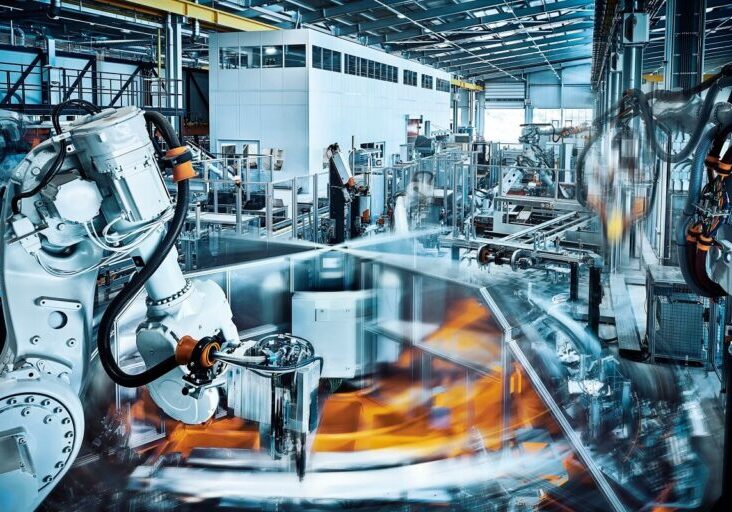Future-Proofing Manufacturing: Embracing ERP, Cloud, and AI for Growth
September 9, 2025
5 minutes read
Table of Contents
- Summary
- The Competitive Gap: Cloud + AI is Reshaping ERP Value
- ERP is Your Digital “Spine” and Misalignment Hurts
- Barriers of Entry: Culture, Comfort, and Misconceptions
- Digital Blueprint Should be Your First Approach
- Quick Wins with Back-Office Automation
- Speak CFO Language to Build the Business Case
- Final Thoughts: From ERP Hesitation to Transformation
Summary: Manufacturers lag in adopting modern, cloud-based, AI-powered enterprise resource planning (ERP) systems, risking inefficiency and lost opportunities. Embracing cloud ERP and back-office automation drives efficiency, resilience, and competitiveness, unlocking operational excellence and future-proofing their business amid rapid technological change.
Nearly every manufacturer will tell you they “already have an ERP.” However, what’s less common is being able to extract maximum value from said ERP because it’s a modern, cloud-based, AI-enabled platform. In today’s climate where cloud technologies and AI are reshaping the manufacturing landscape, the value of keeping a legacy ERP platform is expensive.
For CFOs, COOs, and IT leaders in small to mid-market manufacturing and distribution companies, the path to modernization may feel like either a risky overhaul or a leap into the unknown. Instead, it’s a necessary next step towards efficiency, resilience, and competitive edge.
The Competitive Gap: Cloud + AI is Reshaping ERP Value
Manufacturers are at a crossroads. While the broader business world is racing to the cloud, many manufacturing and distribution companies are lagging behind. Whether they are unsure about the necessity or wary of disruption, manufacturers who are not fully embracing the cloud at the same level as they should be will eventually face cost disadvantages and limited access to AI-driven insights.
Why does this matter? Because cloud ERP platforms don’t just digitize records, they are designed for continuous improvement that transforms operations. AI-assisted processes, like closing financial books or predictive analytics, can turn month-long manual efforts into tasks completed within hours. Manufacturers who are leveraging AI-driven ERP, aren’t just modernizing, they’re future-proofing.
ERP is Your Digital “Spine” and Misalignment Hurts
ERP isn’t just another system. It’s the spine of your business, connecting finance, supply chain, production, and customer service. When your ERP spine is misaligned, everything hurts from financial struggles with delayed closings and compliance headaches and inaccurate inventory and procurement delays to teams operating in silos and service falters impacting customers.
This misalignment tends to happen as a slow drift where processes evolve faster than the systems supporting them. The solution starts with annual or periodic ERP health checks to help safeguard a digital spine that is adapting to new business models and growth trajectories. While neglecting alignment is rarely a conscious choice, the cumulative impact of inefficiency, risk, and lost opportunity, can have a profound affect. For CFOs, COOs, and IT leaders, framing modernization as a health check makes the decision feel less daunting and supports your current and future needs.
Barriers of Entry: Culture, Comfort, and Misconceptions
The mindset of “It works, why change?” is understandable. ERP projects can be disruptive and long. However, for family-owned manufacturers, modernization isn’t purely a technical challenge, it’s often a cultural one. Legacy, on-premise systems equate to familiarity and comfort, however the hidden costs of doing nothing can limit efficiency, increase compliance risks, and reduce growth.
Miscommunication around requirements, limitations of existing system capabilities, or the actual investment needed can stall progress before it even begins. To overcome these barriers, it’s essential for finance and IT leaders to champion a new way of thinking that empowers their teams with the tools and mindset needed for efficiency, clarity, and sustainable growth. True modernization goes beyond chasing the latest technology trend. With AI projected to reach near-universal adoption within six years, preparing teams to adapt and thrive has never been more critical.
Digital Blueprint Should be Your First Approach
The most common mistake in ERP projects is picking a system first, which will lead you down a path without knowing your actual requirements. A digital blueprint serves as a comprehensive map of your business, data flows, integrations, security needs, and user roles. Without this blueprint, manufacturers are reacting to rapid changes instead of staying proactive. As a foundational asset, an ERP blueprint enables manufacturers to plan effectively, anticipate challenges, and achieve successful outcomes. A thorough digital blueprint consists of:
- System Interaction Map: Documentation of how all IT systems and software interacts with one another.
- Data Flow and Storage Design: Detailed outline of where data is stored, how it moves, and how it’s accessed.
- User Access Requirements: Identification of which users need access to specific data, systems, and functions.
- Integration Points: List and explanation of integrations with other platforms, tools, and vendors.
- Infrastructure Impact: Considerations for how changes will affect network, hardware, security, and compliance.
- Requirements and Objectives: Clear definition of business goals, project requirements, and success criteria.
- Timeline and Milestones: Project schedule with key milestones, deliverables, and deadlines.
- Roles and Responsibilities: Identification of accountability and ownership for each part of the project.
Quick Wins with Back-Office Automation
Modernization doesn’t have to start with a big bang. Back-office automation is often the lowest-hanging fruit and the fastest way to fund modernization. Robotic process automation (RPA), AI, machine learning (ML), workflow automation, and ERP integrations can streamline critical functions, such as accounts payable, invoice processing, expense management, payroll, onboarding/offboarding, procurement, inventory, compliance and financial reporting, CRM/ERP synchronization, and document management.
While back-office automation is immensely valuable to manufacturers and distributors, the key is to start small. Begin by documenting current processes, identifying personnel impacts, establish a project plan, and then move into development and testing. By following this approach, mid-market manufacturers can build momentum and confidence that improves efficiency and their bottom line, while staying agile to adapt to evolving technologies.
Speak CFO Language to Build the Business Case
Margins in manufacturing are traditionally thin. Every inefficiency from manual reconciliations to disconnected systems, reduces profitability. Legacy, on-premise ERP systems were not built for the pace of today’s evolving manufacturing landscape. Because they cannot support AI-driven automation or deliver real-time insights, manufacturers continue to pay competitiveness tax, which equates to higher labor costs, slower decisions, and missed opportunities.
With cloud ERP platforms continuously rolling out updates, embedding AI features that automate data entry, and enabling predictive analytics, modernization isn’t just about technology. It’s a tool for efficiency that leads to faster and better business decisions, improvement in operational agility, and teams adapting quickly to market shifts, supply chain challenges, and customer demands. By reframing ERP and modernization into hard metrics, you can help CFOs, COOs, and IT leaders realize the lasting benefits, such as the financial closing cycle shifting from days to hours, manual data entry hours eliminated, audit finding hours reduced, and new working capital unlocked.
Final Thoughts: From ERP Hesitation to Transformation
No ERP can do everything, and it shouldn’t try. The real value lies in the ability to seamless connect your ecosystem towards greater efficiency, agility, and competitiveness. For small to mid-market manufacturers and distributors, embracing a modern ERP is not a radical leap. It’s about securing tools that will continue to deliver real-time data, automate workflows, and enable analytics for years to come.
Adopting a modernized ERP platform is not an act of risk, but a calculated step toward operational excellence. For manufacturers and distributors clinging to familiar legacy systems, modernization is a bridge built with actionable blueprints to drive success, clear priorities, and quick wins that pave the way to sustainable growth. By reframing modernization as a strategic integration, CFOs, COOs, and IT leaders can confidently chart the course towards a stronger, more resilient future.
Stay informed with Aprio.
Get industry news and leading insights delivered straight to your inbox.
How we can help
Ready to unlock the full potential of a modernized ERP platform? Aprio’s Business Applications Consulting and ERP Consulting team can guide you on a journey towards implementing the right ERP solution for your unique needs.



